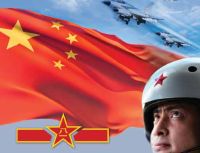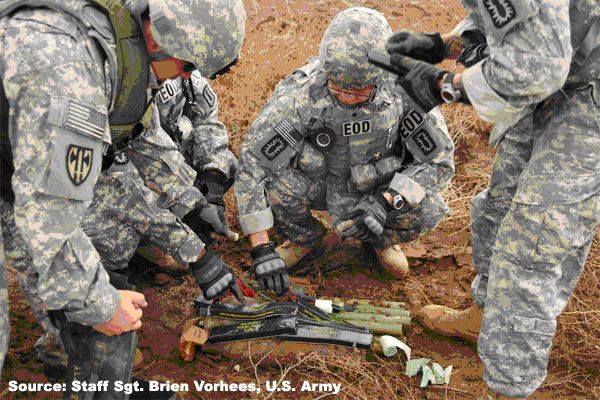An analytical overview of the Doctrine and Strategy of the Chinese PLAAF. The writer highlights that change in the PLAAF is happening across a wide front and in myriad endeavours, in operational matters, in institutional affairs and in the acquisition of new capabilities. Today, the PLAAF is more operationally capable than at any time in its past. The years 1993, 2002 and 2004 represent important benchmarks for Chinese military modernisation. In 1993, the Chinese leadership and the PLA issued the equivalent of a new national military strategy. In 2002, the entire PLA was told to rethink how it would incorporate 21st century information technologies and operations in outer space, cyber space and in the electromagnetic spectrum to conduct information intensive operations. In 2004, the PLA Air Force, promulgated a service specific Space Operations concept, being Prepared for Simultaneous Offensive and Defensive Operations, yielding a significant PLAAF role in strategic deterrence and a desire for the capability to win high-tech local wars with airpower. The PLA Air Force, PLA Navy and the Second Artillery are now being described as “strategic” services with strategic level missions in their own right.
Changing PLA, Changing PLA Air Force -“We should keep deepening and broadening preparations for military struggle, quicken the pace of the modernisation work of the troops and keep enhancing the capability of accomplishing diversified military tasks with winning localised wars under informatised conditions as the core”.
— Hu Jintao to PLA Air Force Officers Attending 11th PLA Air Force Party Congress on 22 May 2009.
This article is published with the kind permission of “Defence and Security Alert (DSA) Magazine” New Delhi-India
 |
| Click to enlarge |
The People’s Liberation Army Air Force (PLAAF) is an organisation undergoing a series of major transitions and significant changes. Like the rest of the Chinese armed forces, change in the PLAAF is happening across a wide front and in myriad endeavours, in operational matters, in institutional affairs and in the acquisition of new capabilities. Today, the PLAAF is more operationally capable than at any time in its past and it is enjoying the fruits of years of focused and sustained reform and modernisation.1
Operation Desert Storm (1991) shocked the PLA into the realisation that, if it did not begin to focus on being able to engage in high-tech, information age warfare, then it would fall even further behind the world’s modern militaries than it already had. Hence, the CMC promulgated a new national military strategy.
The years 1993, 2002 and 2004 represent important benchmarks for Chinese military modernisation as well as for the PLAAF. In 1993, the Chinese leadership and the PLA issued the equivalent of a new national military strategy. The objective in promulgating “The Military Strategic Guidelines for the New Period” was to refocus China’s military modernisation objectives across and well into, the new century to enable the PLA to fight and win wars based on high-tech weapons and joint operational concepts. In 2002, the entire PLA was told to rethink how it would incorporate 21st century information technologies and operations in outer space, cyber space and in the electromagnetic spectrum to conduct information intensive operations “Local Wars Under Informatised Conditions,” in the parlance of the PLA. In 2004, the PLA Air Force, for the first time in its history, promulgated a service specific “Space Operations, Being Prepared for Simultaneous Offensive and Defensive Operations.”
The exposure to these ideas has driven recognition of the air force as a major national capability to contain and win wars, yielding a significant PLAAF role in strategic deterrence and a desire for the capability to win high-tech local wars with airpower. Also in 2004, the CMC directed the PLA to develop high-tech conventional war fighting capabilities as well as preparing for non-traditional security operations. “The Historic Missions of Our Military in the New Period of the New Century,” articulated by PRC President and CCP leader Hu Jintao in 2004, provided the PLA with a mandate to think beyond conventional war fighting scenarios. The PLA, literally borrowing a term previously used by the US armed forces, now speaks of engaging in “Military Operations Other Than War” (MOOTW).2
Aircraft acquisition
The PLAAF divides its aircraft acquisition into five periods. The first period revolved around the relationship with the Soviet Union (1949–1960), which had a lasting impact on the development of China’s aviation industry and PLAAF force composition. During that period, China acquired about 3,000 Soviet aircraft and received production rights to various models.
The second period began in July 1960, when the Soviet Union notified China that it was withdrawing all of its specialists and cancelling all of its contracts. China then spent several years attempting to either modify or reverse engineer some of the aircraft and missiles furnished by the Soviet Union. After 1965, the Cultural Revolution severely disrupted PLAAF efforts. Between 1969 and 1971, continued disruptions led to profound quality control problems.
The third period began following the 1979 border conflict with Vietnam, when the PLAAF realised that the F‑6 could no longer meet its long-term requirements. As a result, the PLAAF terminated the F‑6 programme and money was infused into the F‑7 and F‑8 programmes, which were faltering at the time. This led China and the PLAAF to begin negotiations with the United States, resulting in a foreign military sales contract (known as the Peace Pearl Programme) in the late 1980s to upgrade the fire control system on the F‑8II with F‑16 class avionics.
The fourth period occurred during the 1990s, when China turned back to Russia for weapon systems and technology. During this period, the PLAAF purchased Su-27s, Su-30s, and Il-76s from Moscow. The Shenyang Aircraft Corporation also began assembling and producing the Chinese-licensed copy of the Su-27, known as the F‑11. The PLAAF deployed its first F‑11s to an operational unit in 2000.3
The fifth period covers the 2000s. During this period, the PLAAF has deployed Chinese produced FB-7s, F‑10s, and K‑8s, as well as modified B‑6 bombers capable of carrying air launched cruise missiles. Although China produces all of these aircraft, most of them either are based on foreign aircraft and technology or include key foreign components, such as the engines.
The current operational component of the “Military Strategic Guidelines for the New Period” is known as the “Active Defence” strategy as adjusted for the conduct of “Local Wars under Informatised Conditions.” The “Active Defence” or “Active Defence Military Strategy” establishes set of broad strategic concepts and principles and a set of very general operational concepts, for prosecuting war at the strategic level of conflict. It applies to all PLA services and branches. “Active Defence” strategy has remained relatively constant
The picture today is quite different. The PLAAF is replacing older fighters with third and fourth generation aircraft fitted with long range, precision strike weapons for land attack and anti-ship missions and, in some of these aircraft, in-flight refuelling capabilities, which when fully operational, will extend operating limits. These include Russian designed Su-27s and Su-30s but also China’s own domestically developed J‑10, which is assessed to be comparable in capability to the US F‑16. Many PLAAF fighters now carry beyond visual range air-to-air missiles and PGMs and the PLAAF possess a first generation air-launched cruise missile (ALCM), carried on the H‑6 medium bomber. China is experimenting with domestically produced airborne warning and control system (AWACS) aircraft and PLAAF aircraft now routinely operate at low level, over water, in bad weather and at night (sometimes all at once). Based on recent trends, these changes are likely to accelerate in the future, so that, within another decade, the capabilities of China’s air force would have strategic reach.4
The defence White Paper of 2004, in unambiguous terms, states that China intends to eventually achieve “command of the air and sea” and the ability to “conduct strategic counter-strikes.” The PLA Air Force (Aerospace Power), PLA Navy and the Second Artillery are now being described as “strategic” services with strategic level missions in their own right.
Military doctrine and strategy
China does not publish equivalents to the US National Security Strategy, National Defence Strategy, or National Military Strategy. Rather, China uses “white papers,” speeches and articles as the principal mechanisms to communicate policy and strategy publicly. The transparency of China’s military and security affairs has improved in recent years, including its biennial publication of Defence White Papers. The Defence White Papers 2008 and 2010 summarise China’s defence policy as upholding national security and unity and ensuring the interests of national development.
Operational Theory (zuozhan lilun, i.e., doctrine): There is no single Chinese word for “doctrine,” and the PLA does not use a word substitute for “doctrine” in referring to its own operational theory or operational concepts. However, recognising that the Americans do use that word, PLA operations professionals translate “US doctrine” as “American Military Operational Theory.” Understanding the linkage between operational theory and operational practice in the PLA is an important tool for identifying operational concepts.
Active Defence (jiji fangyu): The current operational component of the “Military Strategic Guidelines for the New Period” is known as the “Active Defence” strategy as adjusted for the conduct of “Local Wars under Informatised Conditions.” The “Active Defence” or “Active Defence Military Strategy” establishes set of broad strategic concepts and principles and a set of very general operational concepts, for prosecuting war at the strategic level of conflict. It applies to all PLA services and branches. “Active Defence” strategy has remained relatively constant.
—————————————-
1 DOD, Annual Report to Congress: Military Power of the People’s Republic of China 2009 (Washington, DC: Government Printing Office, 2009), VII. P 206.
2 China’s National Defence in 2010. Information Office of the People’s Republic of China. Downloaded from URL:http:// www. china.org.cn/ government/ whitepaper/ node. 7114675. htm on 31 March 2011.
3 Tong Hui, Chinese Military Aviation, 1995–2009, Section 1: Fighters, 1–2, available at http://cnair.top81.cn/.
4 IHS (Global) Limited, “World Air Forces, China,” Jane’s World Air Forces, (Singapore: IHS, July 2009), P, 3–5.

 von
von 


